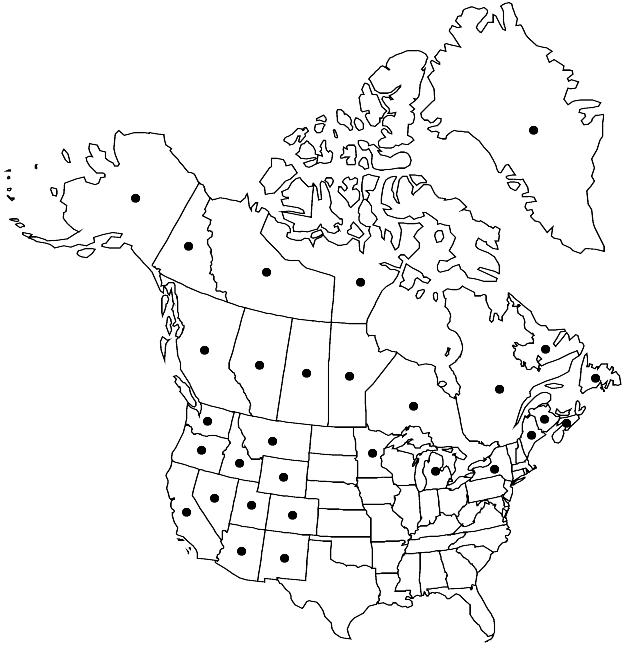Ptychostomum pallens
Phytologia 87: 21. 2005.
Plants in dense or open turfs, pale-pink, red, or rarely dull green. Stems 1–4 (–6) cm, fertile stems comose, innovations evenly foliate. Leaves pink, red, or rarely green, crowded, contorted to shrunken when dry, ovate to broadly ovatelanceolate, flat or weakly concave, 1–3.5 (–4) mm, often gradually enlarged toward stem apex; base pink or green, somewhat to strongly and narrowly decurrent; margins revolute proximally, plane distally, limbidium strong, in 2 or 3 rows; apex acuminate; costa percurrent to short-excurrent, awn stout; proximal laminal cells short-rectangular, 2–3 (–4):1; medial and distal cells 17–24 µm wide, 2–3: 1, walls thin, not porose. Specialized asexual reproduction rare, by leaf-axil gemmae, brown-red to green, finely papillose. Sexual condition dioicous. Seta redbrown, 2–4 (–6) cm, stout, straight to somewhat flexuose. Capsule yellowbrown, elongate-pyriform to clavate, somewhat curved, (3–) 4–5 mm, mouth yellowbrown; median exothecial cells short-rectangular to quadrate, 20–40 µm, 1–2: 1; operculum conic, apiculate; peristome usually well developed; exostome teeth yellow basally, hyaline distally, lamellae straight, pores absent near base along mid line; endostome not adherent to exostome, basal membrane 1/2 exostome height, segments with ovate perforations, cilia appendiculate to nodose, occasionally short. Spores 16–20 (–22) µm, yellow to green.
Phenology: Capsules mature Jun–Sep.
Habitat: Wet soil, along streams, wetlands, calcareous
Elevation: low to high elevations (0-3000 m)
Distribution

Greenland, Alta., B.C., Man., N.B., Nfld. and Labr., N.W.T., N.S., Nunavut, Ont., Que., Sask., Yukon, Alaska, Ariz., Calif., Colo., Idaho, Maine, Mich., Minn., Mont., Nev., N.Mex., N.Y., Oreg., Utah, Wash., Wyo., s South America, Eurasia
Discussion
Ptychostomum pallens is a highly variable arctic-boreal to north-temperate species, related to P. cernuum, P. meesioides, and P. rutilans. The pale pink color is diagnostic but not always present. The species is distinguished from P. rutilans by its much thinner walled non-porose laminal cells and well-developed peristome; from P. meesiodes by its shorter, less arcuate capsule and short exothecial cells; and from P. cernuum by its dioicous sexual condition. The plants have red to red-brown leaf costae.
Selected References
None.
Lower Taxa
"narrower" is not a number."narrow" is not a number.
